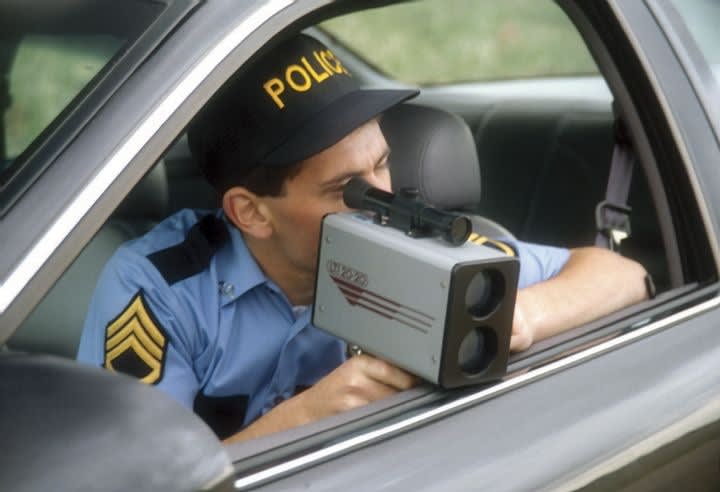When the target is in motion, the distance to the laser is changing. If a constant elapsed time between laser pulses is maintained, the laser can calculate speed by comparing the target's range from one pulse to the next. The entire process takes about one-third of a second.
But suppose the laser wobbles slightly during this calculation, shifting the point of aim from a vehicle's front bumper to the windshield header, a distance of perhaps four or five feet in a passenger car. The variation in distance will result in an incorrect target speed. Laser designers recognize this and use error-trapping algorithms to guard against the possibility. For example, the LTI laser's microcomputer does not display speeds and issues an error message when sweep error is detected. Other lasers collect a longer sampling before displaying a speed as a way to combat sweep error.
Trouble is, a laser in the hands of an expert, being panned very smoothly along a wall, may accept the relatively constant change in distance as legitimate and display a speed, as it did in the New Jersey case. Prosecution experts explained this phenomenon to the judge and described how error-trapping software prevents its occurrence in the real world.
Fine, said the judge, and he invited LTI to submit its error-trapping software for review. This posed a dilemma for LTI; the company was confident of the superiority of its software but also aware that by handing over proprietary data for public scrutiny, that data could be accessible to rival firms. LTI declined the offer.
Too bad, said the judge, who declared that the unit's software had not been scientifically proven to his satisfaction. "After considering all of the proofs and the analysis and the argument presented, I am satisfied that the general concept of using lasers to measure speed is widely accepted in the relevant scientific communities and is valid," he said. "I am, however, not satisfied that the laser speed-detector device is accurate and reliable enough to be used for law enforcement purposes."












